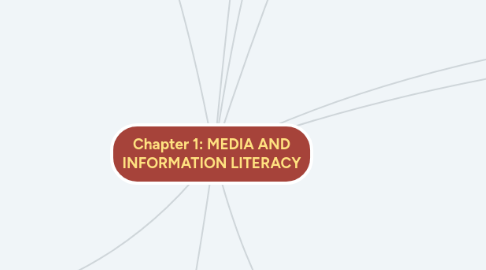
1. UNDERSTANDING MEDIA: AESTHETICS OF FILM AND TV
1.1. THE FILM FORM
1.1.1. Modes of Film Production
1.1.2. Film Formats
1.1.2.1. Narrative
1.1.2.2. Documentary
1.1.2.3. Animation
1.1.2.4. Experimental
1.1.3. Film Image Composition
1.1.4. Motion Framing Concepts
1.1.4.1. zoom
1.1.4.2. pan
1.1.4.3. dolly
1.1.4.4. focus
1.1.4.5. tilt
1.1.4.6. truck
1.1.5. pedestal
1.2. CRAFTING MEDIA MESSAGES
1.2.1. Creating Meaning in Audio Production
1.2.2. Creating Meaning In Image Production
1.2.3. Creating Meaning in Audiovisual Production
1.3. THE TV BROADCAST
1.3.1. Kinds of TV Shows
1.3.1.1. Informative Programming
1.3.1.2. Entertainment Programming
1.3.2. TV Show Anatomy and Advertising
2. UNDERSTANDING MEDIA: AESTHETICS OF NEW MEDIA
2.1. DECONSTRUCTING NEW MEDIA
2.1.1. New Media Technology: Convergence and Characteristics
2.1.2. New Media as Multimedia
2.1.3. New Media Transition: from Synergy to Transmedia
2.2. INTERSECTING TRADITIONAL MEDIA AND NEW MEDIA
2.2.1. Journalism + Internet = Blogging
2.2.2. Broadcasting + Internet = Podcast
2.2.3. Film + Internet = Youtube
2.3. TRANSITIONING MEDIA, TRANSITIONING USERS
2.3.1. The digital native and digital immigrant
3. UNDERSTANDING MEDIA: AESTHETICS OF SOCIAL NETWORKING
3.1. SOCIAL NETWORKING
3.1.1. Pertains to online platforms that connect different people in your networks.
3.2. KINDS OF SOCIAL MEDIA AND ITS VARYING USES
3.2.1. Print based
3.2.2. Audio based
3.2.3. Photo based
3.2.4. Video based
3.2.5. Social Networking Sites
3.3. RELEVANCE OF SOCIAL MEDIA IN TODAY'S SOCIETY
3.3.1. Personal Communications
3.3.2. Business and Customer Care Tools
3.3.3. Social Services and Governance
3.3.4. Educational Tools
3.3.5. Advocacy Campaigns
3.3.6. Traditional Media Coverage and Social Media Enhancement
3.3.7. Entertainment Portals
4. THE COMMUNICATION PROCESS
4.1. THE FEEDBACK MECHANISM
5. Easily download reading materials
6. Magnetic Tape
7. DEFINING MEDIA
7.1. As an aid, media helps us spread information in different forms and devices.
7.1.1. MEDIA AS AN INFORMATION INDUSTRY
7.1.2. MEDIA AS A CULTURE OF ENTERTAINMENT
7.2. MOBILE COMMUNICATION TECHNOLOGY
7.3. KINDS OF MEDIA
7.3.1. Traditional media
7.3.2. Social Media
7.4. New Media
7.4.1. Cellular phone, which made it possible to make calls using satellite technology connectivity instead of under-the-ground lines.
7.4.1.1. Cellphone
7.4.1.2. Tablet
8. MEDIA THEN AND NOW
8.1. PRE-INDUSTRIAL AGE
8.1.1. Human beings learned how to control their body parts to be able to talk, language is one of the first things that the brain developed and enhanced.
8.1.1.1. Writing symbols
8.1.1.2. Drawing crude pictures
8.2. INDUSTRIAL AGE
8.2.1. Evolution of factories, assembly line work flows, and devising mechanism.
8.2.1.1. Access to news and information
8.2.1.2. Image recording and the invention of photography
8.3. ELECTRONIC AGE
8.3.1. Information society
8.3.1.1. Telegraph
8.3.1.2. Track player
8.3.1.3. Cassette tape
8.4. DIGITAL AGE
8.4.1. Our current age
8.4.1.1. DSLR's
8.4.1.2. Single Lens
8.4.2. Emergence of the Internet
9. UNDERSTANDING MEDIA: AESTHETICS OF THE MEDIA, TEXT AND AUDIO
9.1. FRAMING AND READING
9.1.1. Newspapers and Journalism
9.1.2. Books, Comics, Magazines, and the Publishing Industry
9.1.3. Photography and Timeless Image Concepts
9.2. FRAMING AND LISTENING
9.2.1. Radio and Evoking Imagination
